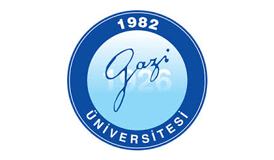European Physics Conference 2018
December 6-7, 2018 Valencia, Spain
Physical and Crystallographic Basis of Displacive Transformations in Shape Memory Alloys
Firat University, Turkey
Shape memory alloys are stimulus responsive materials to the external conditions, and exhibit a peculiar property called shape memory effect, Shape memory effect is initiated by cooling and stressing material, and activated on heating and cooling following the initiated processes. Shape memory behaviour of shape memory materials is evaluated by the structural changes in crystallographic level. Shape memory effect is governed by successive structural transformations; thermal induced and stress induced martensitic transformations, in atomic and crystallographic basis. Thermal induced martensitic transformation occurs with cooperative movements of atoms by means of shear-like mechanism on cooling from parent austenite phase region. Product martensite phase occurs as martensite variants in self-accommodated manner with lattice invariant shears on the {110}-type close packed planes of austenite matrix. Therefore, 24 martensite variants occur in different orientations. Thermal induced martensite occurs as twinned martensite, and the twinned structures turn into detwinned structures by means of stress-induced martensitic transformation by stressing the material in the martensitic condition. Shape memory alloys can be easily deformed through variant reorientation or detwinning process. Therefore, martensite is called soft phase and austenite is also called hard phase. Shape memory effect is activated thermally on heating and cooling after first cooling and stressing processes, this behaviour can be called thermoelasticity. Shape memory alloys exhibit another property called superelasticity, which occurs by only mechanically stressing and releasing at a constant temperature in parent phase region. This is result of stress induced martensitic transformation, at which stress strain curves follow different ways on heating and releasing. This result refers to energy dissipation.
Copper based alloys exhibit this property in metastable β-phase region. Lattice invariant shears are not uniform in these alloys, and the ordered parent phase structures martensitically undergo the non-conventional long-period layered structures on cooling. The long-period layered structures can be described by different unit cells depending on the stacking sequences on the close-packed planes of the ordered lattice. In the present contribution, x-ray and electron diffraction studies were carried out on two copper based CuZnAl and CuAlMn alloys. These alloy samples have been heat treated for homogenization in the β-phase fields. X-ray diffraction profiles and electron diffraction patterns reveal that both alloys exhibit super lattice reflections inherited from parent phase due to the displacive character of martensitic transformation. X-ray diffractograms taken in a long time interval show that diffraction angles and intensities of diffraction peaks change with the aging time at room temperature, and this result leads to the rearrangement of atoms in diffusive manner.
Keywords: Shape memory effect, martensitic transformations, thermoelasticity, thermoelasticity, lattice twinning and detwinning.
Biography:
Dr. Adiguzel graduated from Department of Physics, Ankara University, Turkey in 1974 and received PhD- degree from Dicle University, Diyarbakir-Turkey.
He studied at Surrey University, Guildford, UK, as a post doctoral research scientist in 1986-1987, and studied on shape memory alloys. He worked as research assistant, 1975-80, at Dicle University and moved to Firat University, Elazig, Turkey in 1980. He became professor in 1996, and he has already been working as professor. He published over 50 papers in international and national journals; He joined over 100 conferences and symposia in international and national level as participant, invited speaker or keynote speaker with contributions of oral or poster. He served the program chair or conference chair/co-chair in some of these activities. In particular, he joined in last four years (2014 - 2017) over 30 conferences as Keynote Speaker and Conference Co-Chair organized by different companies. He supervised 5 PhD and 3 M.Sc- theses.
Dr. Adiguzel served his directorate of Graduate School of Natural and Applied Sciences, Firat University, in 1999-2004. He received a certificate awarded to him and his experimental group in recognition of significant contribution of 2 patterns to the Powder Diffraction File – Release 2000. The ICDD (International Centre for Diffraction Data) also appreciates cooperation of his group and interest in Powder Diffraction File.



